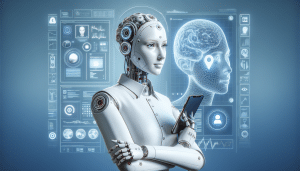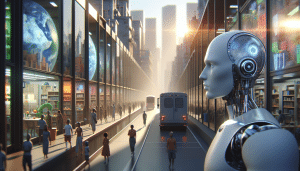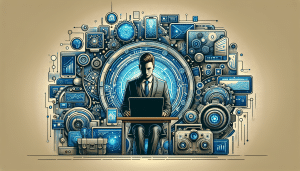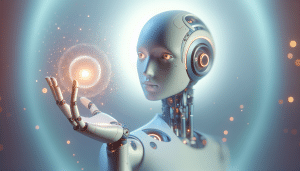Unlocking the Power of Artificial Intelligence for Everyday Life
Oliver Cooper September 28, 2025
Artificial intelligence is transforming the way people live, work, and interact with technology. Discover how machine learning, smart automation, and data analytics are influencing everyday experiences. This engaging guide examines practical AI uses, future trends, and considerations for those curious about the tech reshaping daily life.
Understanding the Foundations of Artificial Intelligence
Artificial intelligence, often shortened to AI, is no longer a futuristic idea. It describes computer systems designed to mimic human behaviors, learning patterns, and even reasoning processes. AI relies on massive datasets, clever programming, and iterative improvement to ‘think’ in ways similar to humans. This is what allows AI-powered devices to assist in everything from finding the quickest route home to recommending books that match unique tastes. The use of machine learning within AI applications stands out as a driving force for advancement. These algorithms learn from massive amounts of data, recognize patterns, and make predictions or suggestions without needing explicit instructions for each task. It’s the magic behind digital assistants responding to spoken commands with relevant answers and smart thermostats learning preferences, continually optimizing energy use over time.
The building blocks of today’s smart technology depend heavily on the combination of advanced sensors, robust data analytics, and cloud computing. As these elements communicate, AI can understand more complex scenarios. For instance, smart cars use AI to recognize road conditions, alert drivers to hazards, and in some cases, take over driving through advanced driver-assist features. Growing capabilities in natural language processing mean that AI can understand context and meaning in human speech with increasingly minimal error. This breakthrough supports voice search, translation apps, and hands-free virtual help—dramatically broadening accessibility for technology users.
Machine learning sits at the heart of AI, giving systems the power to improve over time. Instead of relying on static rules, a machine learning algorithm adapts as new data emerges, becoming more accurate and personalized. These capabilities empower many digital services encountered daily. From personalized movie or music recommendations to smart spam filters blocking unwanted emails, the invisible influence of machine learning grows each year. By understanding these AI fundamentals, one gains a greater appreciation for the unseen technology woven throughout modern digital life.
Everyday Uses of AI-Powered Technology
AI is woven into countless daily routines, even if it’s not always obvious. Smart assistants like Siri, Alexa, and Google Assistant rely on natural language processing to answer questions, manage schedules, or control connected home appliances with simple voice commands. In entertainment, streaming services use AI-powered algorithms to curate playlists and show recommendations, analyzing viewing history, preferences, and even time of day for surprising personalization. AI also powers features like automatic photo tagging and facial recognition in digital archives, so searching for memorable moments is quick and convenient.
Healthcare has seen a surge in AI-integration for both patients and practitioners. Wearable health tech analyzes real-time biometric data, recognizing abnormal heart rhythms or warning of irregular sleep patterns. Hospitals and clinics use predictive analytics to identify at-risk patients and manage appointments efficiently. AI chatbots offer initial guidance or pre-screening tips, ensuring patients are directed to the right level of care without delays. This combination of smart automation and personalized feedback is improving quality of life for many individuals.
Retail experiences are increasingly powered by artificial intelligence as well. From personalized product suggestions based on past purchases to dynamic online chat support, AI improves satisfaction while boosting efficiency for business owners. Some grocery chains now employ AI-driven cameras to track inventory and spot shoplifting. Self-checkout kiosks also streamline the payment process, learning from frequent shopper behaviors to make future transactions faster and more intuitive. Everyday routines are becoming easier and more engaging thanks to seamless AI integration.
Smart Automation and Its Influence on Modern Living
Smart automation brings convenience to modern life. In many homes, smart thermostats, lighting controls, and security cameras operate with minimal user intervention. Using data from sensors and patterns in daily routines, these devices can anticipate needs and conserve energy. For instance, thermostats may adjust temperatures automatically when sensors detect vacant rooms, or lights may switch off as occupants leave. Automation saves time and reduces utility bills, making smart homes attractive for families and eco-conscious individuals alike.
Beyond homes, smart automation transforms entire industries. Warehouses and logistics companies use robots guided by AI algorithms to pick, pack, and ship goods with impressive speed and accuracy. Manufacturing plants rely on robotic arms for precision assembly, quality checks, and even predictive maintenance, all monitored by intelligent systems. In financial services, automation helps with fraud detection and customer inquiries, reducing human error and freeing up specialists to handle more complex tasks. Blending AI, machine learning, and robotics, organizations achieve unprecedented production and service efficiency.
Many cities are evolving into smarter environments through public services powered by automation. AI-driven traffic lights analyze congestion patterns to optimize flows, while public transit systems use predictive analytics for real-time updates and smoother commutes. Waste management, weather forecasting, and utility grids all benefit from these advances. As more systems become automated, cities gain tools to increase efficiency, cut costs, and improve sustainability. A truly smart city builds daily convenience and resilience for its residents through integrated technology and real-time data utilization.
Opportunities in Data Analytics and Career Development
Artificial intelligence and big data analytics offer vast opportunities for those interested in technology careers. Organizations seek professionals who can collect, analyze, and interpret data for strategic decision-making. Data analysts, machine learning engineers, and AI system architects are in high demand. Enterprises across finance, healthcare, education, and retail lean on data-driven insights to improve products, services, and marketing strategies. Online learning platforms and universities offer structured courses—some at no cost—to help learners gain essential skills in AI and analytics, democratizing access to education and career mobility.
The dynamic field of data science blends statistics, computer science, and subject-matter expertise. AI-powered analytics tools identify trends, flag anomalies, and even predict future scenarios. For students or mid-career professionals, practical experience with data analysis is invaluable. Many educational providers now host simulated work projects to bridge the gap between theory and application. Those embracing lifelong learning gain a robust foundation to adapt as automation continues to transform roles and industries.
Skills in AI and data analytics are not exclusive to programmers. Marketing teams use AI-driven customer insight platforms to optimize campaigns. Managers review dashboards that visualize real-time analytics, supporting timely business decisions. Healthcare staff benefit from data-informed diagnostic support. As organizations strive to unlock more value from their data, the ability to interpret and use these insights is a sought-after asset. Exploring courses and workshops in artificial intelligence, even for beginners, can open professional doors and foster continuous growth in an evolving job market.
Ethical Considerations and Privacy in an AI World
As AI systems become deeply integrated into daily routines, ethical concerns take center stage. Privacy is a leading topic, with questions arising about how personal data is collected, stored, and used by companies or governments. Many advocate for transparency—clear disclosure of what information is gathered and how it fuels automated decision-making. The push for ethical AI design involves minimizing bias, ensuring fairness, and offering choices about data sharing. Responsible use of artificial intelligence builds trust with users and safeguards civil liberties.
Some worry about the impact of automation on employment, as smart machines perform tasks traditionally done by humans. Yet advocates suggest that AI is more likely to shift roles than eliminate them. New opportunities arise in system oversight, maintenance, and creative analysis. Policies and training play essential roles in helping individuals transition and thrive in a workforce shaped by artificial intelligence. Open dialogue between industries, policymakers, and the public helps confront bias, accountability, and access issues in AI deployment.
Cybersecurity is also top of mind in AI-empowered environments. Systems processing sensitive information—banking details, medical records, personal identifiers—must be fortified against abuse. AI-driven cybersecurity tools can identify threats quickly and respond before damage occurs. However, vigilant monitoring and robust regulations remain necessary to keep pace with evolving risks. Ethical innovation ensures that artificial intelligence serves the collective good and preserves security for all participants in the digital landscape.
The Future of AI and What Lies Ahead
Looking forward, the horizon for artificial intelligence appears both exciting and full of promise. Researchers explore combining machine learning with virtual reality, making simulated environments more lifelike. Advancements in natural language understanding are narrowing the gap between human and machine conversations. As quantum computing matures, AI may process information at speeds never before seen, opening doors to real-time translation, advanced scientific research, and complex medical diagnoses—on a scale once considered science fiction.
Integration in education could revolutionize classrooms, delivering personalized curriculums and adaptive testing. In medicine, AI might enable earlier detection of diseases, support drug discovery, and even enhance patient experiences with predictive care tools. Environmental monitoring, disaster response, and sustainable agriculture are all set for major AI-assisted evolution. As the technology continues to advance, ongoing attention to ethics, privacy, and public dialogue will shape outcomes and ensure the benefits are widely shared.
Embracing change is essential as artificial intelligence touches more aspects of society. Familiarization with new tools and a commitment to ethical practices will maximize benefits while limiting pitfalls. For everyday users, staying curious and open to learning will be valuable. AI’s story is one of challenge and opportunity, adaptation and discovery. The journey continues, offering fresh possibilities for those eager to explore what’s next in the world of tech and science.
References
1. U.S. National Institute of Standards and Technology. (n.d.). Artificial Intelligence. Retrieved from https://www.nist.gov/artificial-intelligence
2. Harvard University. (n.d.). The Science and Engineering of Artificial Intelligence. Retrieved from https://seas.harvard.edu/artificial-intelligence
3. Pew Research Center. (2022). AI and the Future of Humans. Retrieved from https://www.pewresearch.org/internet/2022/04/21/ai-and-the-future-of-humans/
4. Stanford University. (n.d.). Artificial Intelligence Index Report. Retrieved from https://aiindex.stanford.edu/report/
5. World Economic Forum. (n.d.). What is Artificial Intelligence? Retrieved from https://www.weforum.org/agenda/2020/10/what-is-artificial-intelligence/
6. U.S. Food & Drug Administration. (n.d.). Artificial Intelligence and Machine Learning in Software as a Medical Device. Retrieved from https://www.fda.gov/medical-devices/software-medical-device-samd/artificial-intelligence-and-machine-learning-software-medical-device







